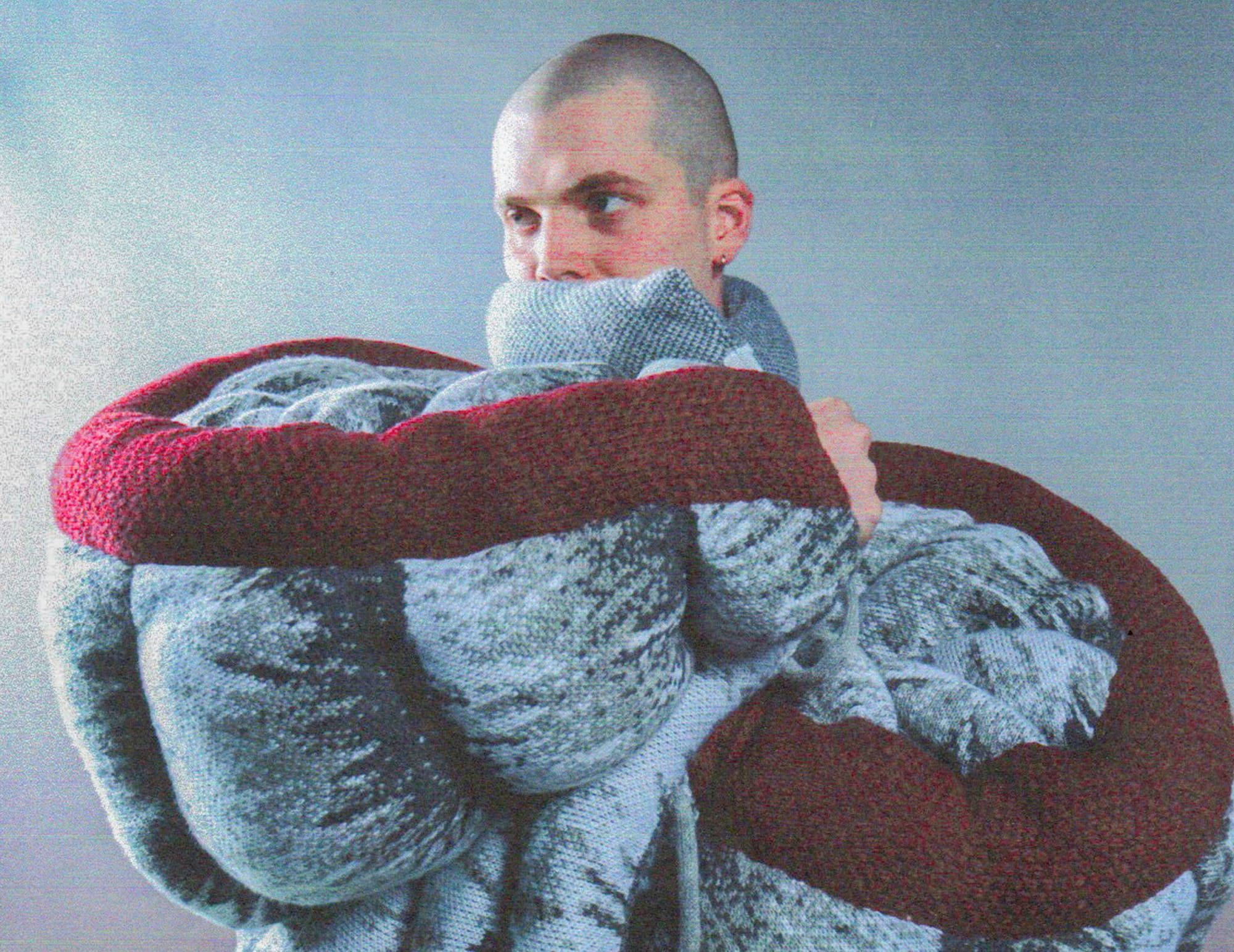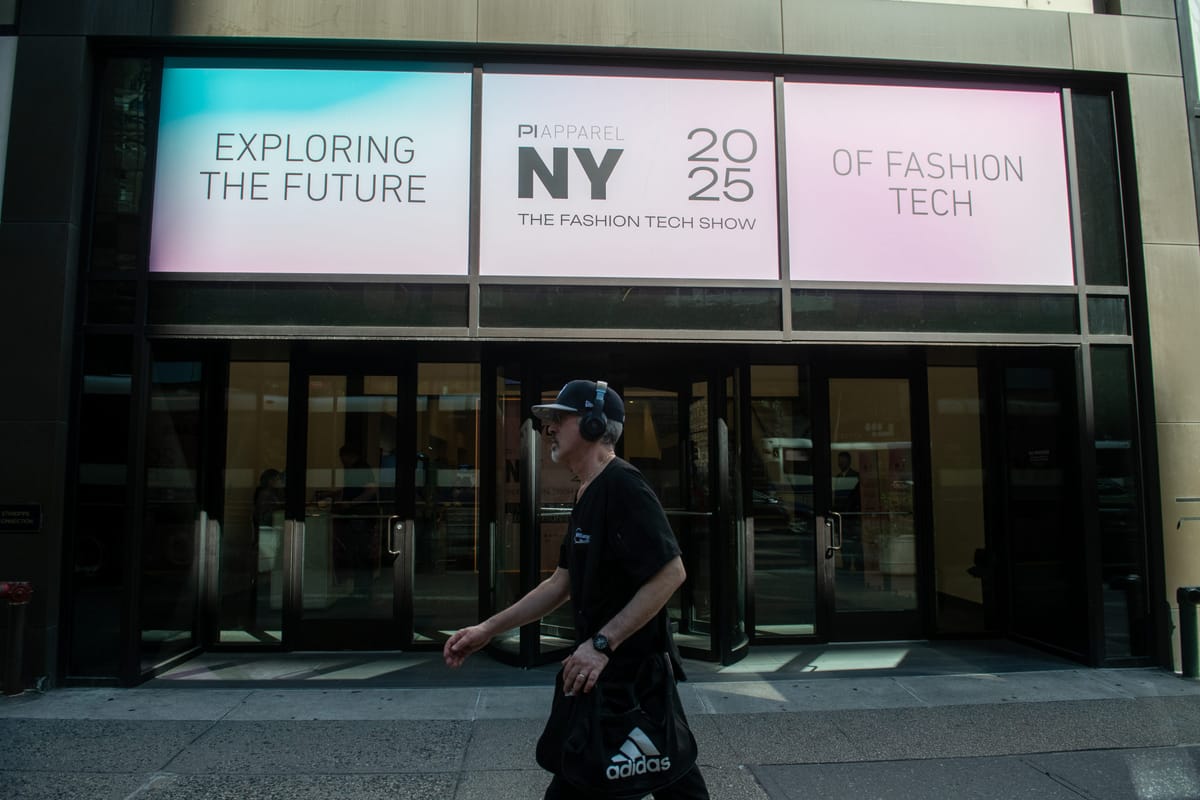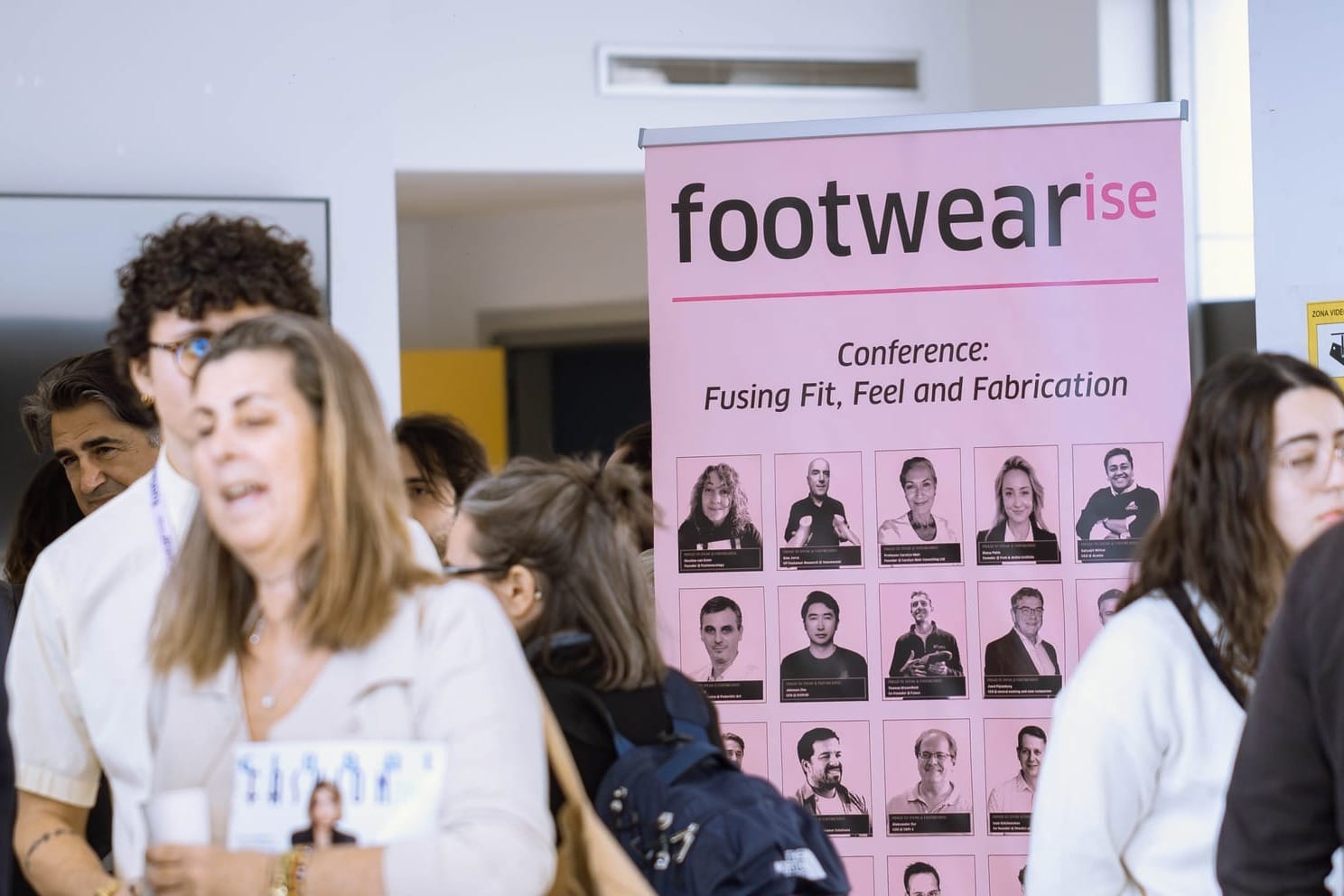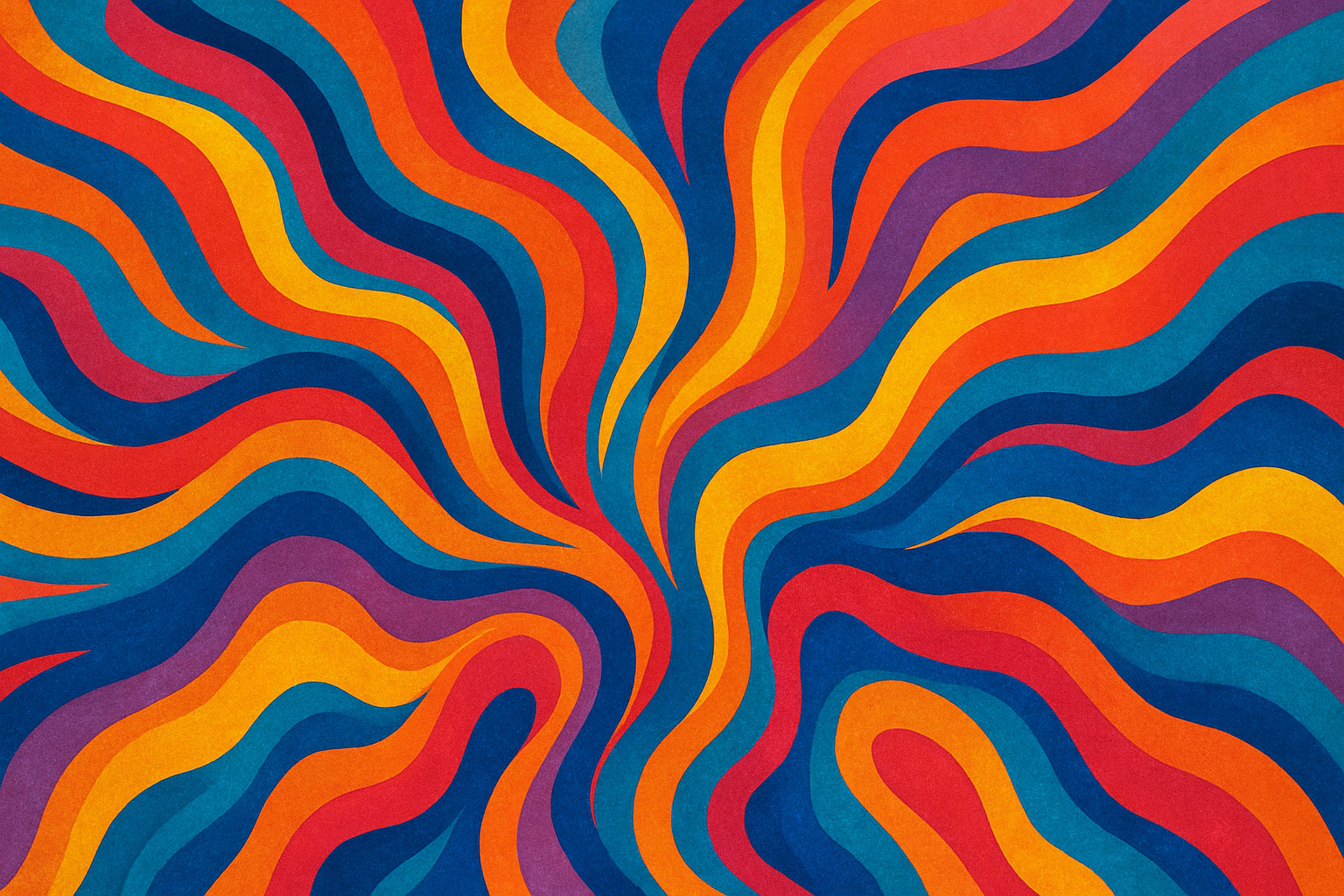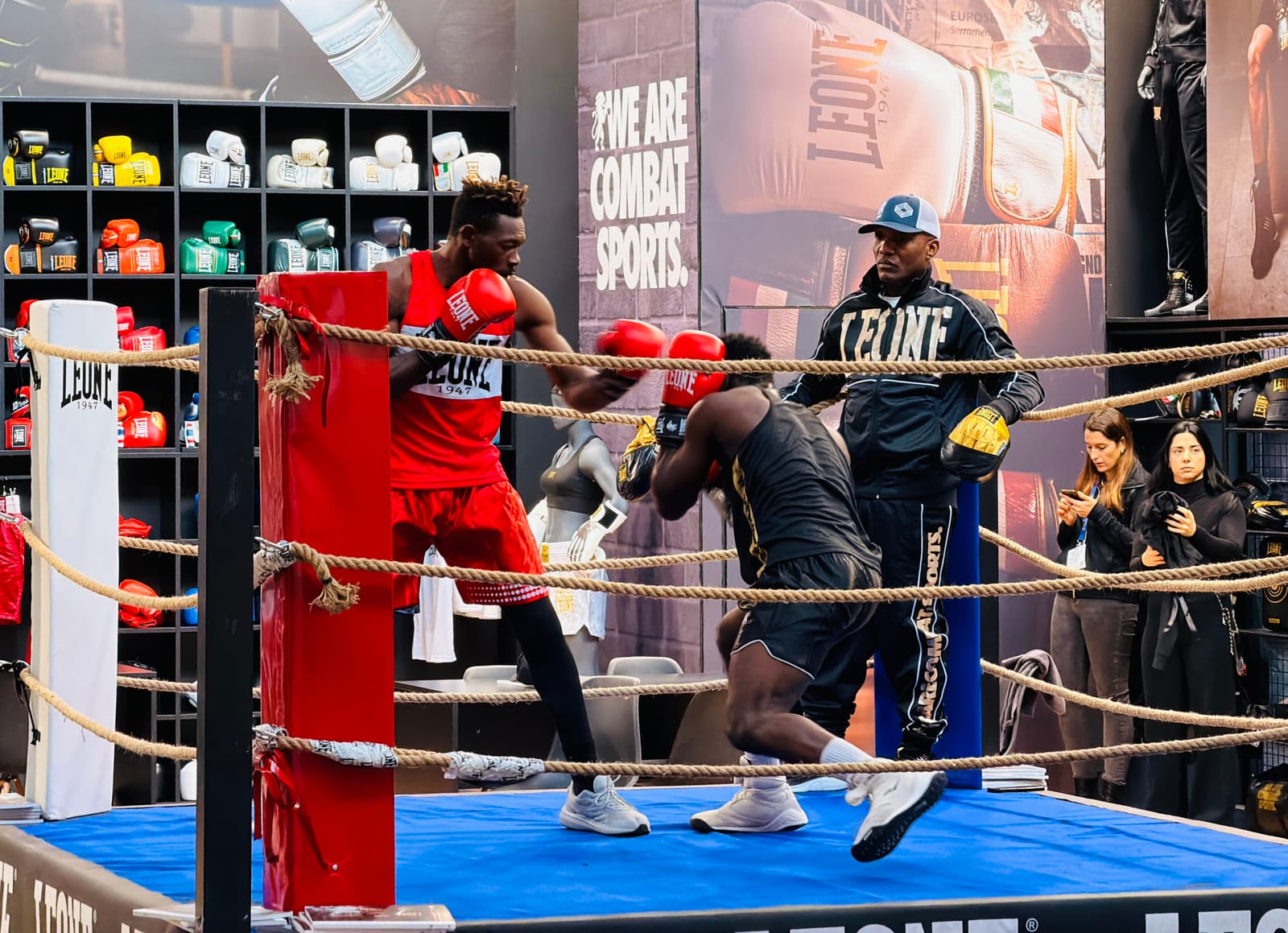Is fashion design just about aesthetics, or a chance to challenge culture, craft, and technology?
Tucked into the creative heart of Amsterdam, the Amsterdam Fashion Institute (AMFI) is more than just the Netherlands’ largest fashion school - it’s a dynamic hub where design, innovation, and critical thinking collide. Among their standout programmes, Fashion & Design offers a rigorous three-year journey that challenges students to forge a personal design signature while exploring material experimentation, technology, and the cultural narratives woven through fashion. From concept to final collection, it’s a process that demands not just skill, but vision and resilience; shaping graduates who are as conscious as they are creative.
I recently got a taste of this during AMFI’s Graduation Show and Catwalk, where this year’s Fashion & Design graduates presented an electrifying range of collections. It was the calibre and sheer diversity of ideas on display (from delicate explorations of heritage to audacious tech-driven collections) that convinced me there was a deeper story worth telling about this next generation of design talent.
After meeting a number of this year’s graduates, I handpicked four designers whose work stood out - not just for its quality, but for its vision. Together, they offer a vivid glimpse into the range of ideas that dominated the catwalk, spanning digitalisation, sustainability, and diversity. Whether through boundary-pushing technology, the soulfulness of their craft, sharp critical lenses, or the sheer electric vigour they brought to our conversations, each one represents a distinct facet of how AMFI is preparing students to actively redefine the future of fashion.
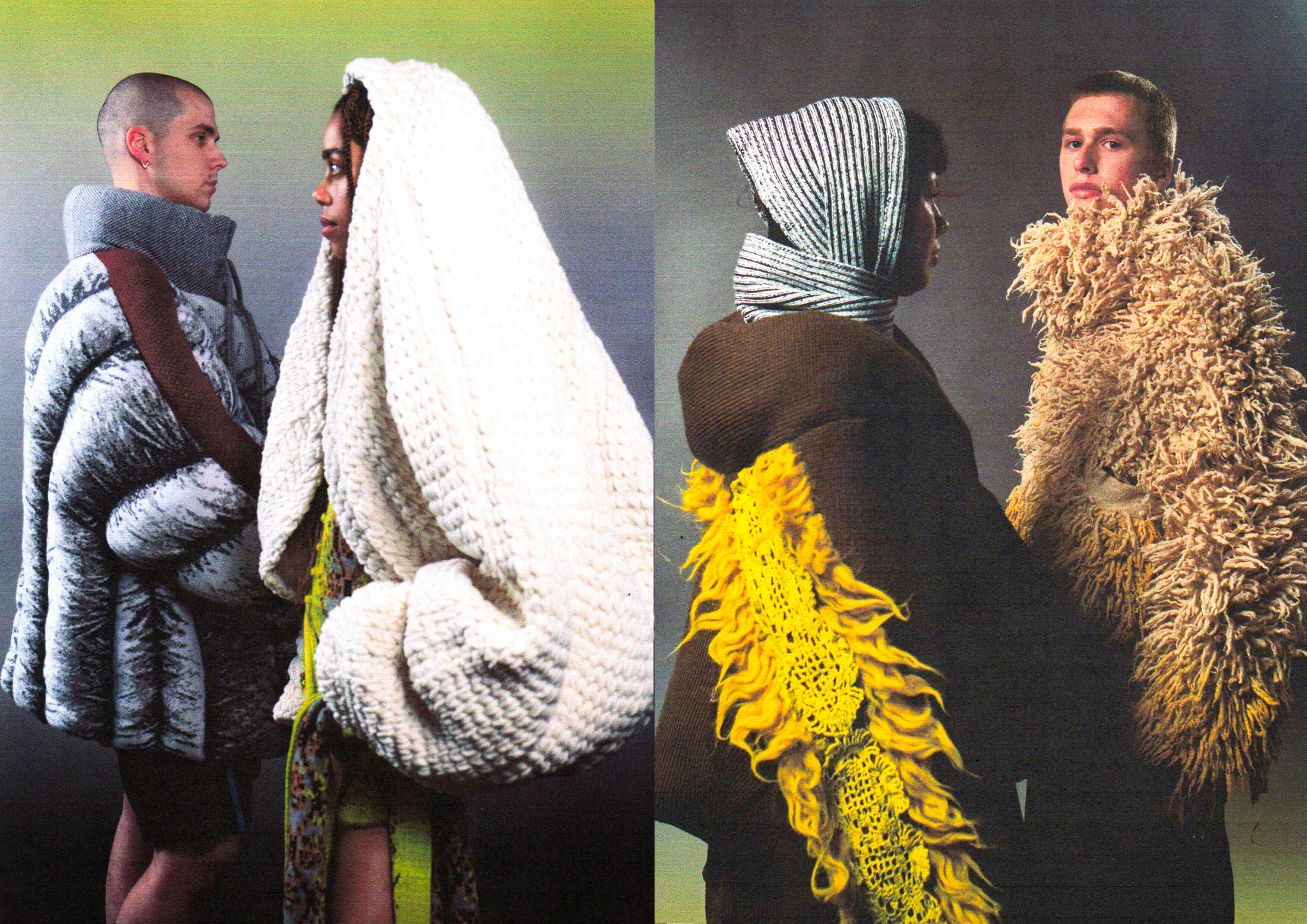
Eva Popa x Resilient Forms - Reimagining Craft as Fashion’s Way Forward
Eva’s lifelong fascination with knitwear began at just seven years old, shaping a designer deeply attuned to the tactile, patient processes of handcraft. That instinct pulses through Resilient Forms, a collection that looks to the past not for nostalgia, but for radical answers to fashion’s fast-paced, disposable present.
Rooted in her Romanian heritage, Eva drew inspiration from the sheepskin coats of local shepherds - garments crafted from necessity that merge natural materials and function. Yet her project didn’t simply replicate these traditions; it transformed them.
I didn’t want to just go back to old practices. I wanted them to work together with our modern needs and technology.
Felting became an antidote to chemical waterproofing, crochet evolved into structural reinforcement, and hand knitting replaced fur with biodegradable, cruelty-free alternatives. The results often defied typical “crafted” aesthetics, pushing familiar techniques into unexpectedly modern, abstract forms.
Her oversized puffer jacket exemplifies this tension: entirely knitted, down to its lining and closures, then hand-stitched together when it proved too large for conventional machines. It’s emblematic of Eva’s commitment to letting time-intensive, analog processes converse with industrial knitting technologies - a bridge between tradition and innovation she sees as essential for fashion’s future.
I wanted to create a collection that shows how these techniques, even though time-consuming, are not just beautiful but essential.
It’s a philosophy she plans to keep exploring alongside her twin sister Alexia, with dreams of building a brand that stays as immersed in making as in designing. If Resilient Forms is any indication, Eva’s vision for outerwear will continue to unravel the industry’s speed-first logic, one thoughtful stitch at a time...
Connect with Eva here.
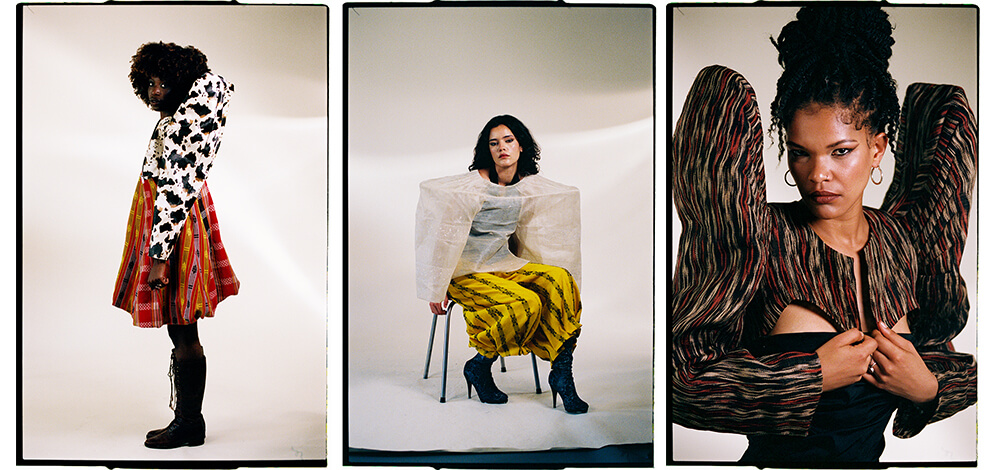
Anne-Marie Dimanche x DOG EATER - Confronting Colonial Hangovers in Punk Silhouettes
Anne-Marie Dimanche’s collection DOG EATER is a raw, provocative ode to her Filipino identity, tackling the insidious legacies of racism and colonialism that still shape both Western and Filipino culture today. Instead of centering aesthetics, Anne-Marie grounded her final collection in values - using fashion as a defiant vehicle to challenge deep-seated biases.
I wanted my visual research to focus on what I stand for, not just what I stand against.
That meant sourcing indigenous Filipino textiles, letting their properties dictate silhouette and shape, and using the iconic sleeves of the terno dress as recurring motifs, all while injecting the irreverence of a “tacky punk princess.”
Her sharp sense of humour also guided the project’s loud colour and print clashes. Even her collection book (now being refined for publishing) captures this defiance, refusing to let her work be neatly boxed into a ‘diversity project.’
The more racist experiences I had in the Netherlands, the more motivated I was to throw it back in their faces.
Anne-Marie’s pieces highlight how colonial hangovers still distort cultural value. By combining traditional textiles from across the Philippines with cow-print faux leather and gaudy taffetas, she exposes how global perceptions of ‘ethnic’ fashion erase nuance, and how internalised biases persist back home.
If there’s one takeaway from DOG EATER, it’s the importance of different perspectives - cultural, yes, but also interdisciplinary. That’s how we keep pushing conversations forward.
Anne-Marie now hopes to either continue bridging fashion and theory in Europe or return to the Philippines to apprentice with local weavers, using every thread to keep confronting, questioning, and reclaiming.
Connect with Anne-Marie here.
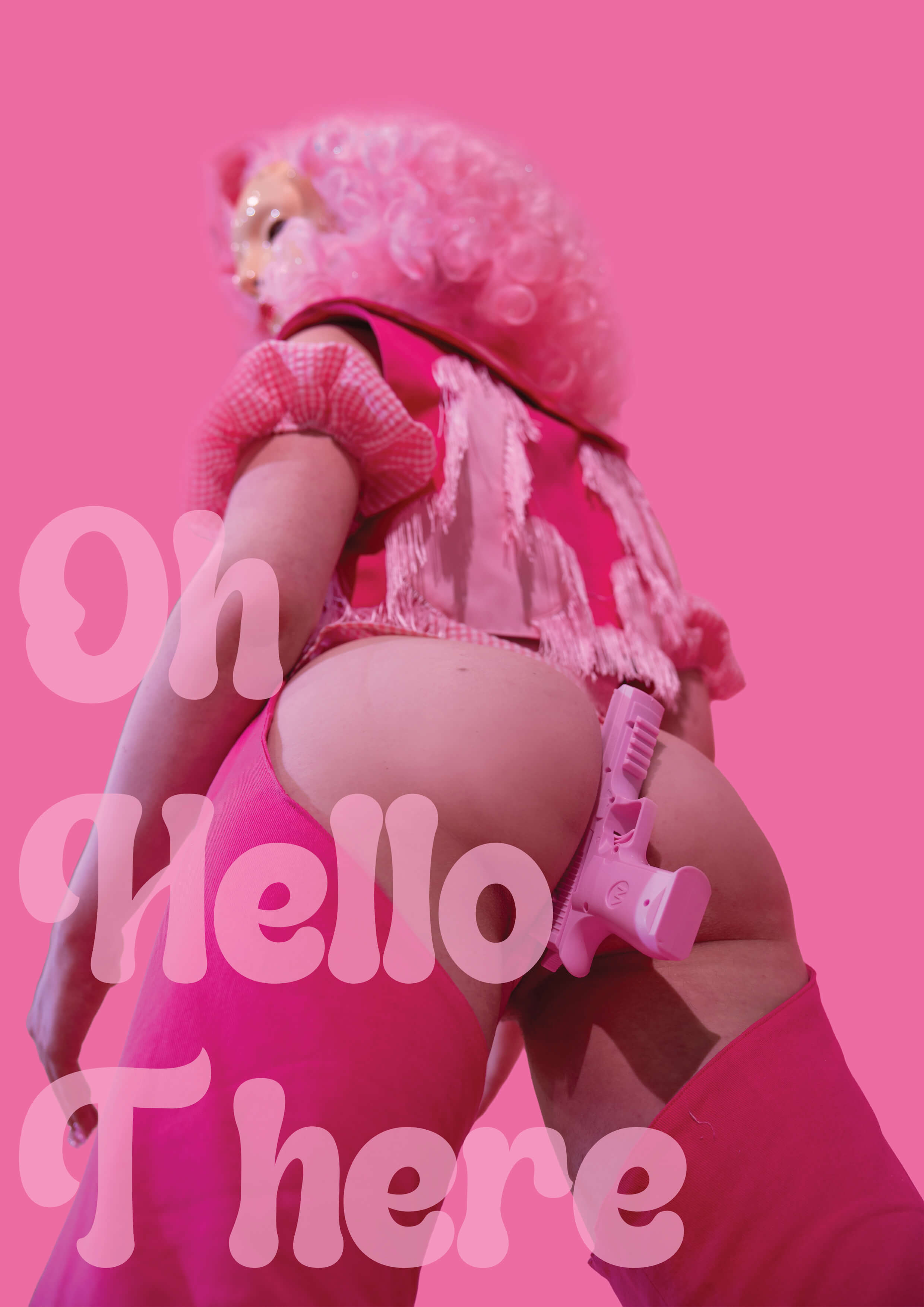
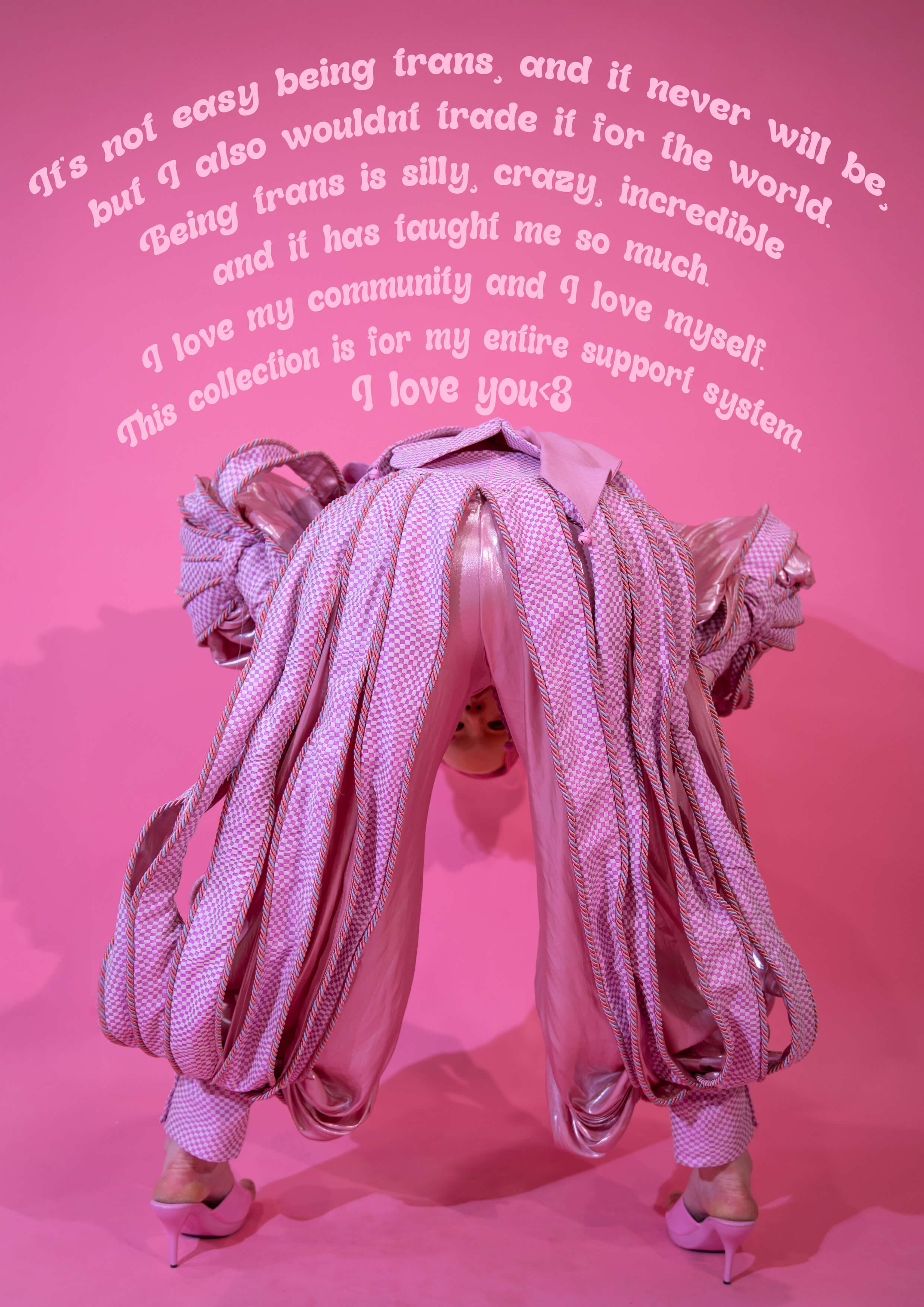
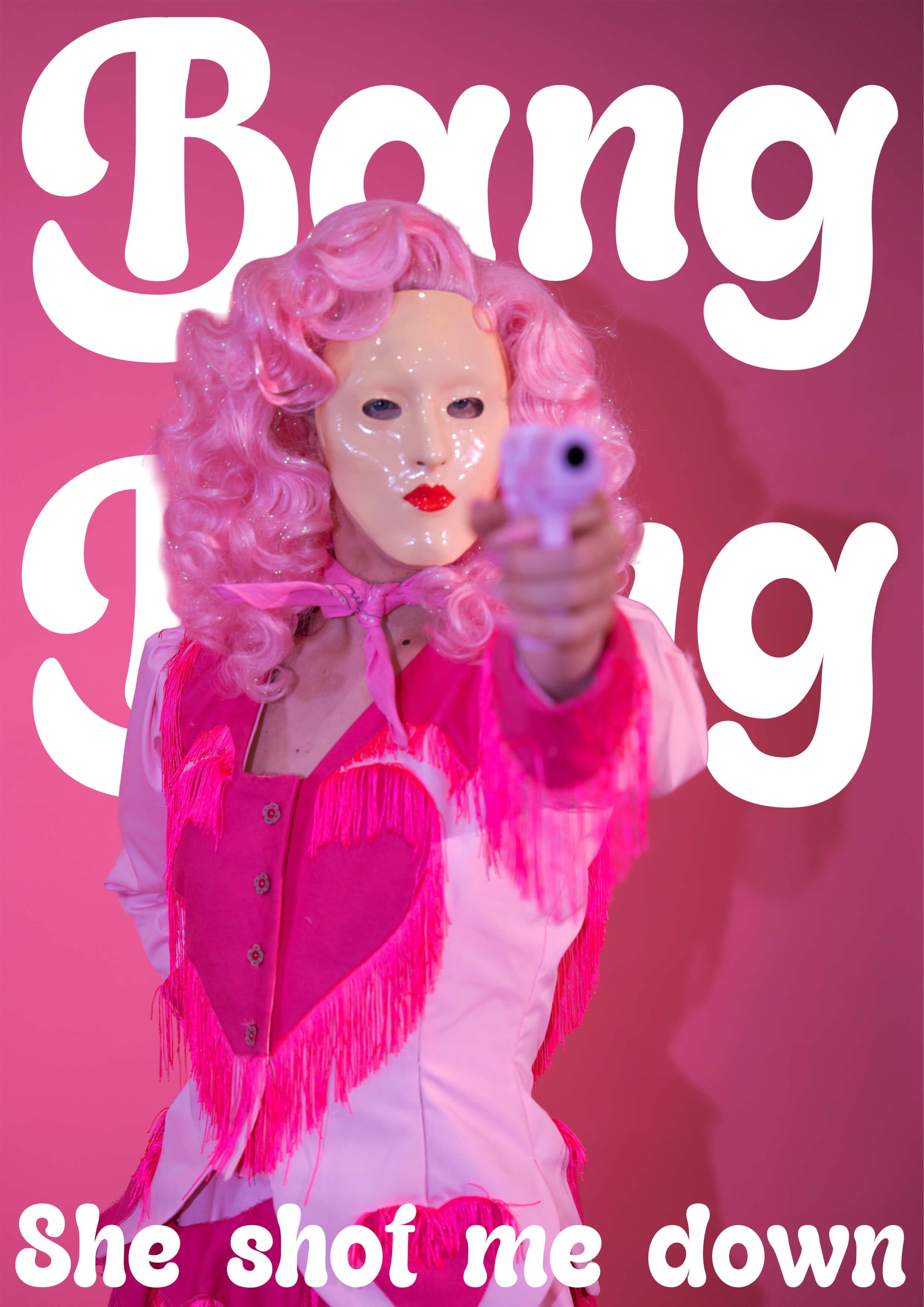
Eve Wientjens x DOLLS - Uncanny Fantasies, Camp Realities
Eve Wientjens’ graduate collection DOLLS unravels how society projects fantasy and fear onto trans women - often treating them less like people and more like plastic objects. As both a trans woman and a burlesque/drag performer, Eve knows intimately how “dolls” became shorthand in queer culture, tracing from 1980s ballroom to today. Her work seized on this link between literal dolls and the objectification trans women face.
Plastic dolls are hyper-feminine, perfect, put together. Trans women are also expected to always look flawless to be seen as valid.
Through playful yet biting exaggerations, Eve built half-human, half-doll hybrids to ridicule and reclaim these stereotypes. Her six looks each explore a different “character” - one styled through her own lens, the other as distorted by the male gaze. Whether stitching slurs like “TRANNY” onto lapels, adding bulges to highlight fetishism, or covering a western suit in laser-cut hearts versus phallic motifs, Eve turns societal projections back on themselves.
I could’ve just written ‘trans rights’ on a dress, but that wouldn’t capture the feeling society gives me. I wanted an uncanny valley moment - to show how ridiculous these views are.
Designed entirely in pink, DOLLS is as much camp spectacle as it is urgent commentary. Eve’s approach embraces theatricality not to trivialise, but to make people confront discomfort and empathy head-on. What began as a love letter evolved into what she describes as a “cry for help,” grappling with the state of trans rights worldwide and her own journey to wear hyper-femininity with pride, and on her own terms.
Now, she plans to channel her full creative energy into performance, with fabulous projects lined up and space to let her identity, craft, and critique dazzle and shine.
Connect with Eve here.
Sem Oueslati x Regression - Rethinking Digital Fashion as a Cinematic, Ego-Exposing Mirror
Sem Oueslati’s journey into digital fashion didn’t begin with fabric but with code. A stint in software engineering and an internship immersed in 3D artistry shaped a designer who’s as fluent in game engines and camera rigs as he is in garment construction. That hybrid foundation pulses through Regression, a project that challenges the very premise of digital fashion by pulling it away from runway mimicry and toward something more immersive, cinematic, and conceptually complex.
Unlike much of digital fashion, which he sees as stuck trying to look “real,” Regression unapologetically leans into the tools of 3D art to explore why humanity itself remains so flawed.
People naturally project outwards, looking for someone or something to blame.
By blurring humans and animals, Sem probes how our primal egos - once essential for survival - may be fuelling modern divisions and crises.
The work doesn’t hammer viewers with slogans. Instead, it seduces through meticulous digital craft: fur rendered in strikingly lifelike detail (a rarity in virtual fashion), raw pelts contrasting with slickly groomed coats, landscapes oscillating between untamed and industrial.
My environments needed a contrast - something primal against something that represents the modern world.
It all started, somewhat ironically, with finishing Red Dead Redemption 2, a game whose turn-of-the-century frontier became the unlikely launchpad for his examination of conquest, nature, and the aesthetics of dominance.
Pushing digital fashion beyond static avatars also meant clashing with tradition. Sem spent the semester essentially graduating as both a fashion student and an animation artist, often under skeptical eyes. But he stayed adamant that better camerawork, cinematic imperfections, and textured storytelling are the real future of digital collections.
Digital fashion will inspire traditional craft. Life imitates art, right?
Up next? A master’s in Digital Fashion Technology at HVA to deepen that rare intersection of garment know-how and 3D expertise. Whether it leads him to cinema, gaming, or live visuals, one thing’s clear: Sem isn’t content letting digital fashion stay a flat imitation when it can be an intricate, challenging mirror to who we are.
Connect with Sem here.
A huge congratulations to all of AMFI’s 2025 Fashion and Design graduates - not just the four featured here, but the entire cohort whose work lit up this year’s catwalk with imagination, integrity, and fearless questioning. With emerging talent like this stepping into the industry, there’s every reason to feel hopeful about where fashion is headed next.
We’d encourage anyone reading - whether you’re looking for fresh collaborators, eager to support young talent through mentorship or internships, or simply curious to dive deeper into these collections - to reach out and connect.
The future of fashion is brighter, bolder, and more thoughtful with these voices in it.
And we’re not stopping here: stay tuned as we turn the spotlight onto AMFI’s brilliant Branding and Management graduates in the coming weeks...
Editor’s Note: ‘Fashion Futures: Class in Session’ is a Seamless series that dives into the schools, students, and educators reshaping the industry from the ground up. By exploring pioneering programmes, breakthrough research, and the bold ideas of tomorrow’s talent, we uncover how fashion education is evolving to meet the challenges and opportunities of a radically changing world.

